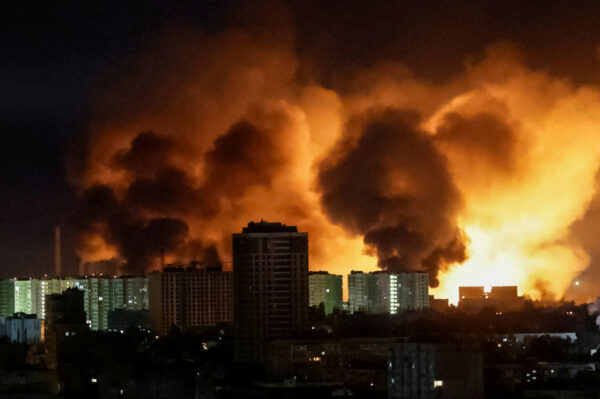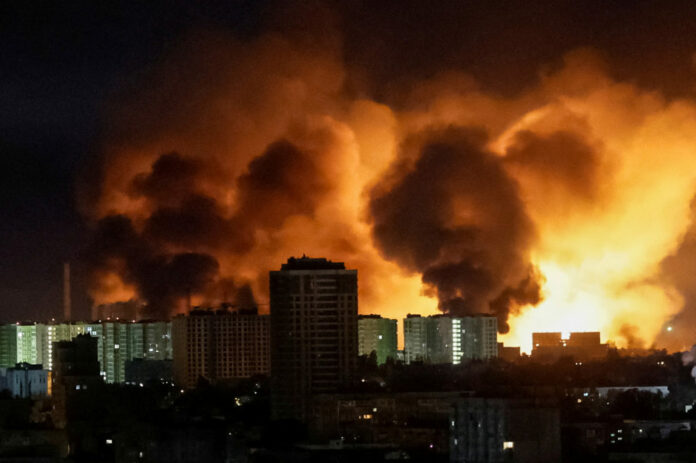Just days after Ukraine’s audacious “Spiderweb” drone operation reportedly crippled a significant portion of Russia’s strategic bomber fleet deep within its territory, Moscow has unleashed a “massive” retaliatory wave of missiles and drones across Ukraine. The retaliatory bombardment, described by Kyiv as one of the largest since the full-scale invasion began, killed at least three people and injured dozens more, underscoring Russia’s intent to respond forcefully to perceived provocations.
Early Friday morning, air raid sirens blared across almost all of Ukraine as Russia launched a relentless barrage. Ukrainian President Volodymyr Zelenskyy reported that Russia utilized “over 400 drones and more than 40 missiles – including ballistic missiles” in the coordinated attack. Regions targeted spanned from Volyn in the west to Sumy in the northeast, and the capital Kyiv was heavily hit.
In Kyiv, three people were killed and at least 20 wounded as falling debris from intercepted munitions sparked fires and damaged residential buildings across six districts. Emergency services worked to extinguish blazes and evacuate residents, with more than 2,000 households temporarily losing power. Similar scenes of destruction were reported in Ternopil, where energy infrastructure was struck, leading to power outages and a reduction in water pressure. In Lutsk, a residential building was hit, injuring 15 people, while other damages were reported in Poltava, Chernihiv, Sumy, and Cherkasy regions.

Russia’s Ministry of Defense confirmed the “massive strike on military and military-related targets in Ukraine,” claiming it was in “response to what it called Ukrainian ‘terrorist acts’ against Russia.” Moscow asserted it used long-range weapons launched from air, sea, and land to successfully strike its intended targets.
The Kremlin’s swift and brutal retaliation comes after Ukraine’s Security Service (SBU) claimed to have executed “Operation Spiderweb” on June 1. That daring covert operation reportedly involved smuggling FPV (First-Person View) drones thousands of kilometers into Russia, hidden in trucks, before launching them against multiple military airbases. Ukraine asserted the strikes hit at least 41 Russian aircraft, including Tu-95 and Tu-22M3 strategic bombers – aircraft frequently used by Russia to launch missile attacks on Ukrainian cities. While Russia admitted some aircraft “caught fire,” it largely downplayed the extent of the damage.
The exchange of blows highlights the intensifying nature of the aerial war. With peace talks between Russia and Ukraine having once again failed to yield a ceasefire agreement in Istanbul earlier this week, both sides appear determined to exert pressure through military means. President Zelenskyy, in the wake of Friday’s attack, called on Ukraine’s allies to “put more pressure on Russian President Vladimir Putin to end the war,” arguing that “now is exactly the moment when America, Europe and everyone around the world can stop this war together.”
As rescue efforts continue and the full scope of the damage becomes clear, the latest Russian strikes serve as a stark reminder of the war’s relentless civilian toll and Moscow’s unwavering resolve to retaliate against Ukrainian long-range capabilities.
